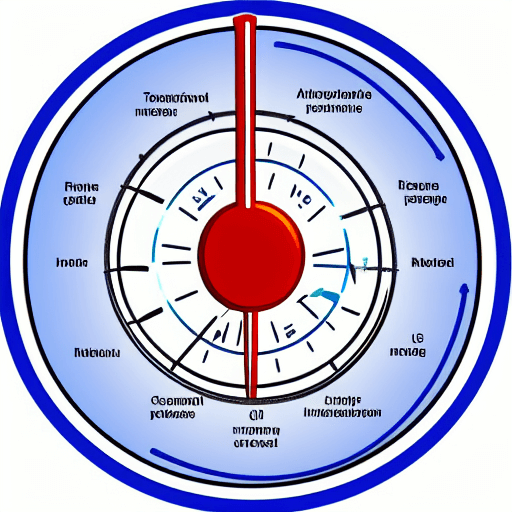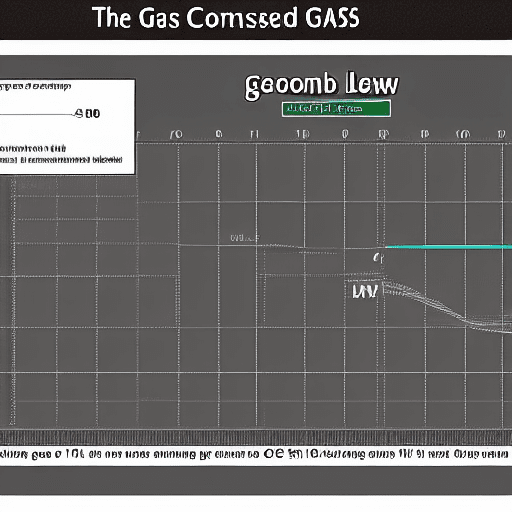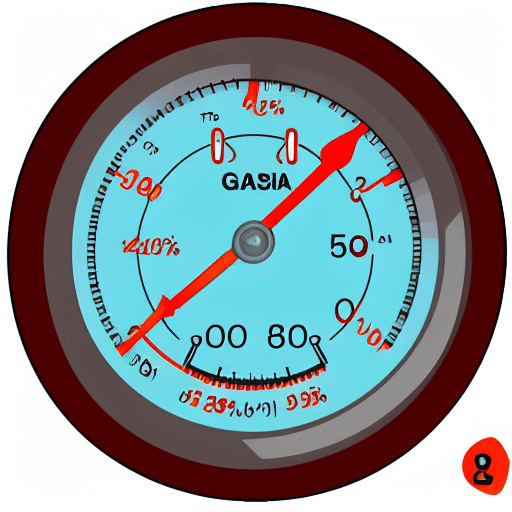The Combined Gas Law
The combined gas law is a mathematical formula that helps to describe the behavior of gases.
It combines the three laws of gas behavior into one equation.
This law is important for scientists and engineers who work with gases, and it can help them to predict how gases will behave under different conditions.
In this blog post, we will discuss the combined gas law in more detail and explain how it works.

The combined gas law states that the pressure of a gas is inversely proportional to its volume and directly proportional to its temperature.
Explain It To A Child
The combined gas law explains how pressure, temperature, and volume are all connected to gas.
This law is a result of Boyle’s Law and Charles’ Law.
What is the combined gas law and what does it describe
The combined gas law is an equation that describes the relationship between the pressure, temperature, and volume of a gas.
The form of the equation is PV=nRT, where P is pressure, V is volume, T is temperature, n is the number of moles of gas, and R is the gas constant.
The combined gas law takes into account all three variables, unlike the individual gas laws which only focus on two of the variables.
The advantage of the combined gas law is that it can be used to predict the behavior of a gas under a variety of conditions.
For example, if the pressure of a gas is increased, the volume will decrease.
Alternatively, if the temperature is increased, the volume will also increase.
How is the combined gas law a result of Boyle’s Law and Charles’ Law
The combined gas law is a result of Boyle’s Law and Charles’ Law.

Boyle’s Law states that the pressure of a gas is inversely proportional to its volume.
- Charles’ Law states that the volume of a gas is directly proportional to its temperature.
- The combined gas law takes these two laws and combines them into one equation.
- The combined gas law states that the pressure of a gas is inversely proportional to its volume and that the volume of a gas is directly proportional to its temperature.
- The combined gas law is used to calculate the pressure, volume, and temperature of a gas.
- The combined gas law is used in many fields, such as chemistry, physics, and engineering.
- The combined gas law is an important tool for scientists and engineers.
What are some applications of the combined gas law?
The combined gas law is an equation that describes the relationship between the pressure, temperature, and volume of a gas.

This law is particularly useful in chemistry and physics when dealing with gases in sealed containers.
For example, when a container of gas is heated, the molecules move faster and take up more space.
As a result, the pressure inside the container increases.
Similarly, if the temperature decreases, the molecules slow down and take up less space, causing the pressure to decrease.
The combined gas law can be used to predict these changes and to determine the properties of gases at different temperatures and pressures.
Additionally, this law can be applied to real-world situations, such as determining the effect of altitude on air pressure.
In general, the combined gas law is a valuable tool for understanding the behavior of gases under different conditions. Dive into the world of air control systems and their relation to the Combined Gas Law.
How can scientists and engineers use the combined gas law to predict the behavior of gases?
The combined gas law is a crucial tool for scientists and engineers working with gases.

This law takes into account the relationship between pressure, temperature, and volume to predict how gases will behave under different conditions.
By understanding the combined gas law, scientists can more accurately predict the behavior of gases in a variety of settings.
- For example, the law can be used to calculate the effect of changes in temperature on the pressure of a gas.
- This information is important for many applications, such as designing safe containers for pressurized gases.
- In addition, the combined gas law can be used to determine how changes in pressure will affect the volume of a gas.
This knowledge is essential for understanding processes like combustion, where gases rapidly expand as their pressure increases.
By understanding the combined gas law, scientists and engineers can gain insights into a wide range of phenomena involving gases.
What are some examples of when the combined gas law would be used?
The combined gas law is commonly used in situations where one or more of these variables are changing, such as when a gas is heated or cooled.
For example, if a balloon is filled with air at room temperature and then taken outside on a cold day, the combined gas law can be used to predict how the change in temperature will affect the pressure inside the balloon.
Similarly, if a tire is inflated with air at high pressure, the combined gas law can be used to calculate how much the volume of the tire will decrease when the air inside is cooled.
In addition to these everyday applications, the combined gas law also has important implications for scientific research.
- For instance, it can be used to study how changes in atmospheric pressure might affect the climate of Earth.
As this example illustrates, the combined gas law is a versatile tool that can be used to understand a wide variety of physical phenomena.
What are some limitations of the combined gas law?
The combined gas law has some limitations.
- First, it assumes that the volume of the gas is independent of the pressure. This assumption is not always accurate, especially under high pressure.
- Second, the combined gas law only applies to ideal gases. Real gases deviate from ideality at high pressures and low temperatures, so the predictions made using the law may not be accurate in these cases.
- Finally, the combined gas law does not take into account the specific heat capacities of different gases. This means that it cannot be used to predict the energy changes that occur when a gas is heated or cooled.
Despite these limitations, the combined gas law provides a helpful tool for understanding how gases behave under various conditions.
By understanding the combined gas law, scientists can better control and study gases in a variety of settings. Just like gases adjust under different pressures, your tires need expert care.
Article Sources
Jacks of Science sources the most authoritative, trustworthy, and highly recognized institutions for our article research. Learn more about our Editorial Teams process and diligence in verifying the accuracy of every article we publish.
